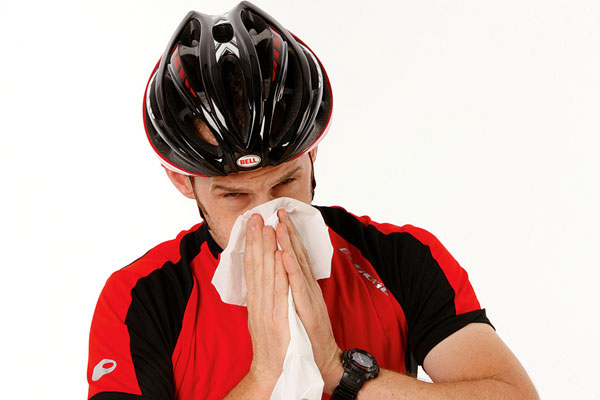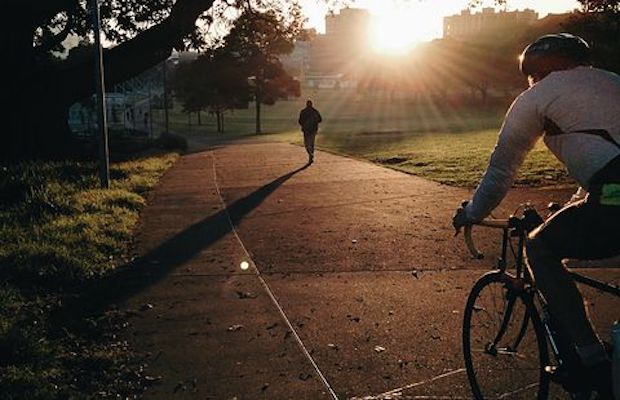Illness can be the scourge of the most rigorous and well-thought-out training plan, especially if it means time off the bike.
Colds and the flu are particularly common at this time of year and it can be difficult to stick to a training programme when you know you are not in full health.
There are basically two different types of illnesses that we are commonly affected by. The flu is caused by viruses known as Influenza A or B, and the common cold which is caused by viruses called coronaviruses and rhinoviruses. If one of them hits you, your immune system builds a lifelong immunity to it.
The flu is much more severe than a common cold as it is usually accompanied by body aches and a fever. Therefore, your body’s immune system is taxed much more by the flu than by the common cold. At this time, training would not only be detrimental to recovery and adaptation, but it would also to your health as well. While training can help us gain muscle, lose fat and feel good, it is a catabolic activity.
The body needs to be in good health in order to go from the catabolic state caused by the exercise to an anabolic state of recuperation and muscle growth. So if you have the flu, your body is already fighting a catabolic state caused by the Influenza virus. Training on the bike would only add more catabolism, which in turn would negatively affect immune system against the virus, causing you to get sicker. Absolutely no training if you have the flu. Once the flu runs its course, slowly start up back on your training program not pushing yourself too hard. Go on how you feel in subsequent weeks.
If the common cold is bringing you down and the virus is mild (runny nose, slight coughing, sneezing), you may get away with training. It would definitely be wise to keep the intensity to a minimum. Again, if the cold virus is causing you to feel run down, achy, with a sore throat and headaches, it would be best to stop training all together until the symptoms subside. You don’t want to make it any harder for the immune system to fight the virus by introducing more catabolic activity, so keep the intensity down.
The most important thing to remember when you are off the bike with an illness is not to panic – especially if you have built a good fitness base in the preceding months. A strong base will stand you in good stead when you look to return and is reason for keeping your discipline and not rushing back too soon.
You should make a three-step approach to returning from any injury or illness – frequency, duration, intensity.
First, you should build the frequency back up by returning to training, not being afraid to take a step back along the way if necessary. Then the volume of training (i.e. the number of hours in the saddle) should grow and finally intensity can be added to complete the comeback.














